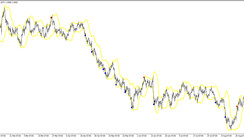Going back through the mists of time, back to the dark distant past of Halloween 2008, and a mysterious paper has just materialised on the less-trawled recesses of the web.
The paper, published by a soon-to-be notorious ghost known only as Satoshi Nakamoto, proposes a strange kind of digital alchemy – a peer-to-peer electronic cash system called Bitcoin. In little over a decade the ghost’s genius proposal would weave its unique spell across the entire globe, turning the financial world on its head and magicking a favoured few into billionaires.
Whether Nakamoto purposefully published his now legendary Bitcoin white-paper on the 31 st October or whether it was a coincidence, is anyone’s guess. But crypto market strategists have now started to notice another spooky tie between Bitcoin and the Witchy feast of Jack O’Lanterns. It’s called the Halloween Effect.
Feeling brave this Halloween? Trade over 160 assets with 1:500 leverage on LonghornFX. Open your free LonghornFX account today.
What is the Halloween Effect?
The Halloween Effect – sometimes referred to as the Halloween Strategy or Indicator – is a market-timing strategy derived from the world of stocks. The theory goes that if an investor buys stocks on October 31 st (i.e. Halloween), holds on to them throughout the winter, and sells around April, then these assets have a tendency to perform better and reap bigger profits. Some hard-line Halloween investors will even refuse to buy stocks in the summer months, as they believe these assets will not be as fruitful.
Now, you may be thinking so far, so silly superstition . But there is some sound thinking behind why this seasonal stock-buying strategy may work. Some believe the tradition originated in the UK, when the upper classes would flee London for the summer and head to their peaceful country estates. As they were on holiday, these privileged financiers would tend to ignore their investment portfolios during these months. This would result in an overall decline in performance of their assets. When they returned to the city in late September, they would once again start buying and selling stocks in earnest.
How is the Halloween Effect impacting Bitcoin?
It’s fair to say that the Halloween Effect had, well, little effect on Bitcoin for many years. Until about 2016, that is.
Looking back on the October 2016 period to May 2017, one will notice that Bitcoin enjoyed a distinct bullish rally. Around that Halloween, Bitcoin neared the $800 level, and by the following May had climbed to over $2,000 for the first time. A few weeks later it surpassed $3,000. Anyone who had bought Bitcoin in October 2016 would have made well over 100% return on their investment.
Cue Halloween 2017, and things got even crazier. Between that October and May 2018, Bitcoin rose to an all-time high of $20,000. What’s more, many investors seemed to implement the Sell in May and Go Away strategy, causing Bitcoin to enter a bullish run throughout the subsequent summer months. Once again, proving the theory correct.
Of course, it’s important to remember that the Halloween Effect is only meant to be used as an indicator and can never be relied on as a hard-and-fast rule. Other factors will inevitably come into play that will affect an asset’s value. The outbreak of the COVID-19 pandemic in 2020 caused the Bitcoin market to crash around March, meaning those who had invested in the crypto the previous October saw a definite decline in Bitcoin’s value. Thankfully, Bitcoin has proved to be one of the world’s most resilient assets in 2020 and regained its strength.
Bitcoin’s performance for Halloween 2020
Anyone who has been keeping up to date with Bitcoin news will know that digital gold has been enjoying quite the year. Since the market crash in March, Bitcoin has rallied significantly and trebled in value. In October of this year, Bitcoin climbed past $12,000, and continued to rally past the $13,000 mark.
So are we in for another Halloween Effect over the next six months? We could well be. Market analysts have long been predicting that should BTC break upwards of $12,000, it could follow through with an even stronger rally. Should the analysts be proven correct, we may see Bitcoin climb to a new all-time high.
There’s also the fact that popular online payment system PayPal have announced news that they will be welcoming cryptocurrencies on their platform. The service will initially be launched for U.S. account holders only, with expansion into international markets slated for early 2021. So there’s a good chance Bitcoin will enjoy a significant boost in value during Q1 of next year.
Will the Halloween Effect prove true once again? Here’s hoping!
Trading BTC this Halloween
When used with caution, the Halloween Effect can be a useful market-timing strategy to determine Bitcoin’s likely performance over the coming months. Word to wise, any Bitcoin trader should also consider other factors as well to minimize the risks.
Whether you’re feeling bullish or bearish on Bitcoin this Halloween, you can still make a killing by trading BTC and 30 other cryptos, all with 1:500 leverage, on LonghornFX. Open a free LonghornFX account and trade from as little as $10 today.





